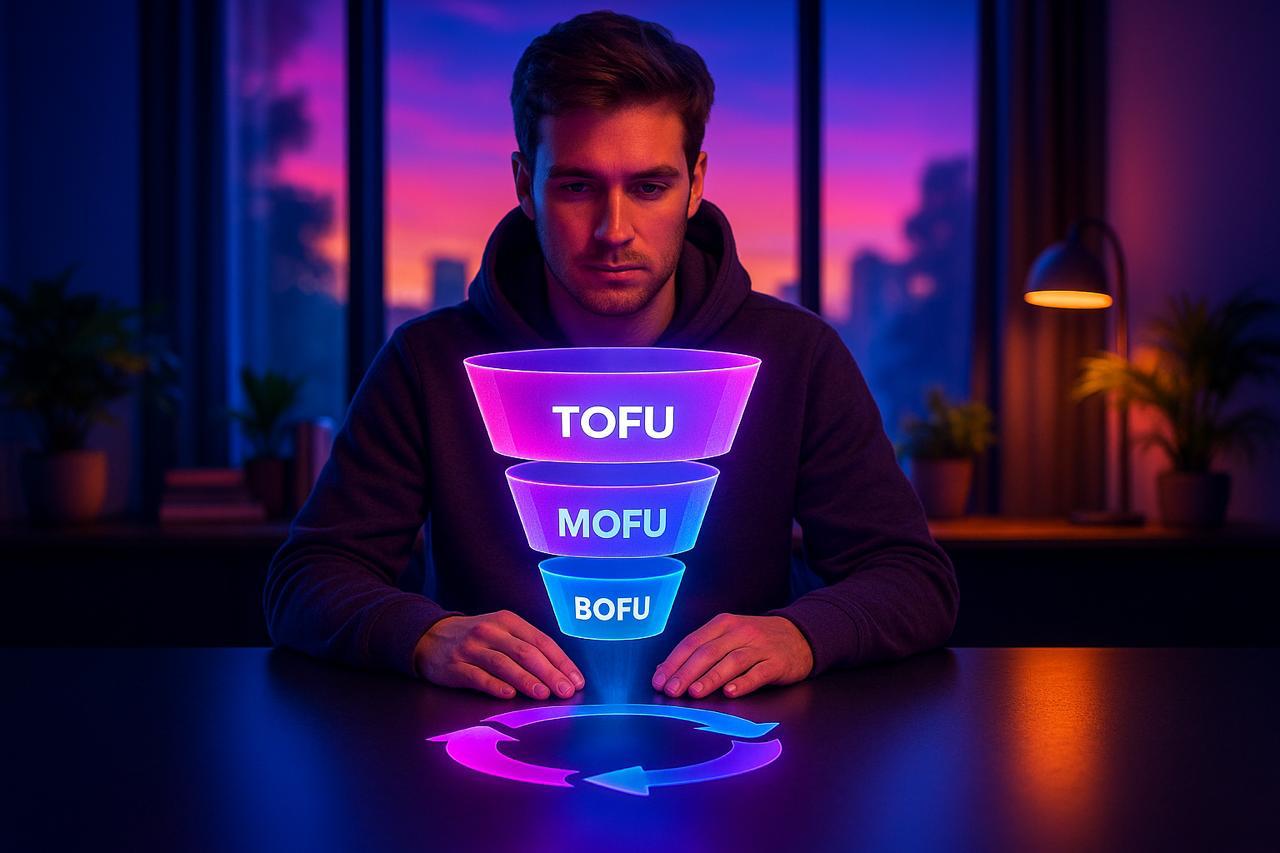Intro: From Search to Strategy
When people search for terms like 'what is TOFU content' or 'how to structure a full-funnel strategy,' they’re not just looking for definitions,they’re trying to solve business problems. Companies like HubSpot didn’t grow by chance. They built massive content libraries aligned with buyer intent, converting thousands of visitors by matching the right message to the right stage of the funnel.
That’s where TOFU, MOFU, and BOFU content come in. They aren’t static stages, they’re signals of what someone needs. When your content is aligned with that intent, you don’t just educate—you accelerate decisions.
At Funnely, we specialize in building full-funnel content systems that meet users at every step, educating at the top, validating in the middle, and converting at the bottom. Using sprint-based execution, we bring content to life quickly, aligned with search behavior and performance goals.
Why
The problem with one-size-fits-all content? It ignores user intent. When you talk pricing to someone still learning, or give 101 guides to someone ready to buy, you lose them.
Full-funnel content solves this by:
• Aligning messaging to buyer stage
• Increasing engagement by speaking their language
• Reducing CAC by qualifying earlier
• Improving conversion by delivering content when it’s most useful
Instead of guesswork, we use sprint-style testing to validate:
• Which content formats perform by funnel stage
• What messages improve sign-up or demo rates
• Where drop-off happens in the content journey
By thinking in loops and testing fast, your content becomes a growth system.
How
1, Define Your Funnel Objective
• Identify what stage (TOFU, MOFU, BOFU) you want to optimize
• Determine the user intent at that stage (education, evaluation, or decision)
• Choose a content format suited for that objective (blog, case study, ROI page)(e.g., drive demo requests, reduce bounce, increase activation)
• Choose your stage: TOFU, MOFU, BOFU, or full-funnel
• Submit a short brief (audience, topic, asset inventory, goals)
2, Map Content to User Intent
• Select keywords and topics aligned with search behavior
• Structure pages or assets to meet that intent (e.g., explainer article, comparison page, onboarding checklist)
• Ensure that each piece offers a clear next step for the readerWe log in to your CMS or content management system
• Drafts, designs, and content flows are built directly, with tracking in place
• SEO, lead capture, CTAs, or CRM tags are implemented as part of the sprint
3, Launch and Optimize
• Track how users engage with each asset (time on page, conversion path, CTA click-through)
• Analyze gaps or friction points
• Iterate by expanding successful content or revising underperformersWe review live performance (traffic, bounce rate, conversion goals)
• What works gets expanded
• What fails gets optimized or paused
Each sprint adds a new layer to your funnel, stackable, scalable, and tied to KPIs.
What
TOFU (Top of Funnel)
• Purpose: Attract, educate, and build trust
• Examples: SEO blog posts, reports, industry explainers, trend guides
• Topics: "What is product-led growth", "How to reduce churn in SaaS"
• Sprint Type: SEO Blog Content Sprint (LLM-Optimized, 12 Articles)
MOFU (Middle of Funnel)
• Purpose: Qualify and deepen understanding
• Examples: Case studies, comparisons, webinars, how-tos
• Topics: "X vs Y", "How fintech Z cut onboarding time 42%"
• Sprint Type: Lead Magnet Creation & Landing Page Funnel
BOFU (Bottom of Funnel)
• Purpose: Convert with confidence
• Examples: Pricing pages, ROI stories, onboarding guides
• Topics: "Total cost of ownership", "Month 1 success playbook"
• Sprint Type: Paid Ads Campaign Booster
Cross-Funnel Journeys
• Use case: Blog post (TOFU) → downloadable guide (MOFU) → case study + CTA (BOFU)
• Execution: Map intent, identify drop-offs, build supporting content to connect stages
• Sprint Type: Lifecycle Email Sequence Flow Setup
FAQs
What does TOFU, MOFU, BOFU mean?
They stand for Top, Middle, Bottom of Funnel. They map to how ready someone is to buy.
How do I know what content fits where?
Base it on intent. TOFU content solves broad problems. MOFU compares options. BOFU reassures buyers and supports decisions.
Can I reuse content across stages?
Yes, modular content can become a guide, webinar, or case study with the right angle.
What if I already have a content library?
Run a content audit. Map existing pieces to the funnel. Fill gaps with targeted sprints.
How many pieces per stage should I have?
Start with 2–3 per persona, per stage. Then expand based on performance.
Does this work for B2B SaaS?
It works especially well. Long journeys mean structured, stage-based content gives clarity and accelerates buying.
What if users skip stages?
That’s common. Good funnel design gives them clear paths forward, no matter where they enter.
How fast can a content sprint go live?
TOFU and BOFU sprints can go live in under 10 days, depending on access and approvals.
Do I need writers and designers in-house?
No. You can execute this approach with internal teams, freelancers, or platforms designed for sprint-based content delivery.
Where do I start?
Identify your most common drop-off stage and start building the content bridge right there.
Conclusion: Build a Funnel That Matches Buyer Intent
TOFU, MOFU, and BOFU aren’t content types—they’re buying signals. When your strategy is structured around intent, not assumptions, your funnel starts converting by design.
At Funnely, we help teams build full-funnel systems powered by fast content sprints and loop-based testing.
Book a free strategy session to build your next layer of growth.



%20Strategy%20and%20How%20Do%20You%20Build%20One%20That%20Works%3F.jpeg)





